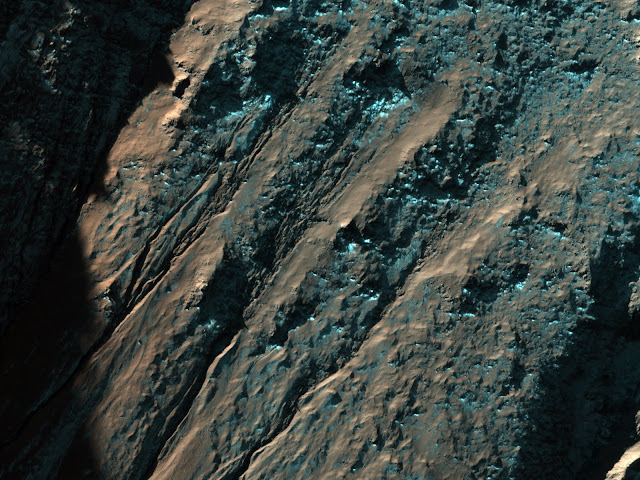By high summer, the extensive dune fields of the north polar region are completely defrosted and the number and variety of dunes are readily visible.
Photo credit: NASA/JPL/Arizona State University
Note: These dunes are located in Hyperboreae Undae, northeast of Escorial Crater.












































